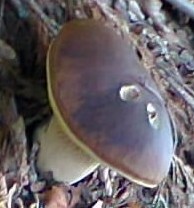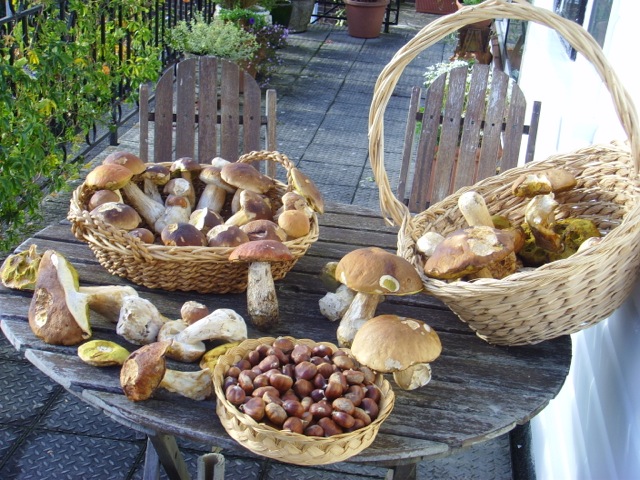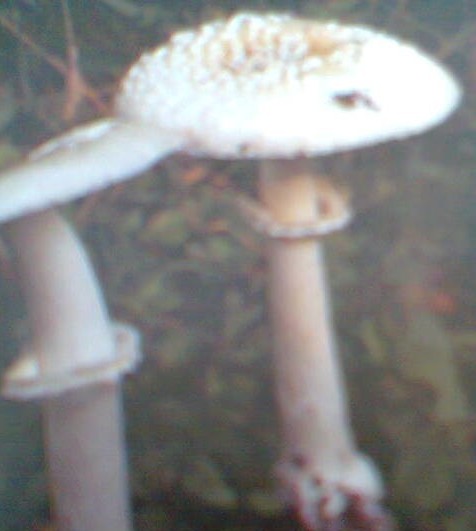
Given some warmth, with just enough rain, and up they start to come, a feast – or lingering death – in our nearby fields and woods (a six mile radius), otherwise known as fungi or mushrooms. And it is tempting, with blackberries to pick and apples lying on the ground, to take advantage of what nature has to offer. But…and there is a “but”.
First the delicious chanterelles (a yellow, edible fungus) Cantharellus Lutescans/Cibarius, in yellow-orange splashes through the trees, together with the small purple ‘Amethyst Deceiver, Laccaria amethystea (that should not be eaten in quantities above two kg since they contain a small, but significant, amount of arsenic).

Then after warm rain (anytime in summer) the fairy ring champignons (edible mushrooms) Marasmius oreades, mostly in large circles hidden out in the fields, nutty to smell, nutty to eat (but, no, not so far as I know hallucinatory).
Finally the glorious often phallic Boletus with their ‘sponge’ instead of gills underneath, much anticipated as August nears its end, and in a good year carrying on until the first hard frost.
The Boletus Edulis and Aereus are the porcino in Italian (an edible mushroom/woodland fungus), cep in French, Steinpilz in German – over there selling for anything up to £70 a kilo. In the same family there’s also the spindle-shaped Appendiculatus (bright yellow underneath and firm of texture), the Badius (lighter yellow staining blue when you touch, the Leccinum Aurantiacum, orange cap or birch boletus (turning black when you cut it, but firm and highly prized by the Russians), and the slimy capped Luteus.

Slice and sauté any of them in olive oil and/or butter adding chopped garlic and parsley. Eat on their own or with pasta. Or make a risotto (for whose broth you can buy cubes of porcino concentrate).
As for preserving, slice and dry in the sun, or freeze; or freeze the cooked sauté before you add the garlic and parsley. Don’t defrost when you come to use either version of the frozen porcini : instead sauté hard from frozen, adding seasoning, garlic and parsley and a small amount of tomato paste. That way they retain much of their texture and taste.

But do remember, growing anywhere in wood or field, and in even more seducing beauty, are the white, green or yellow flecked Amanita Phalloides/Virosa, known as the Death Cap and Exterminating Angel, both lethal in even small quantities and mixed with other ‘mushroom’ (favoured assassination weapons of Roman Emperors – they are tasteless and after eating no symptoms appear for at least nine hours, by which time there is no cure).
And by the way, use a stick to scratch around before you reach your hand down to the ground – baby adders are very difficult to see this time of year.
Photo John Howlett


